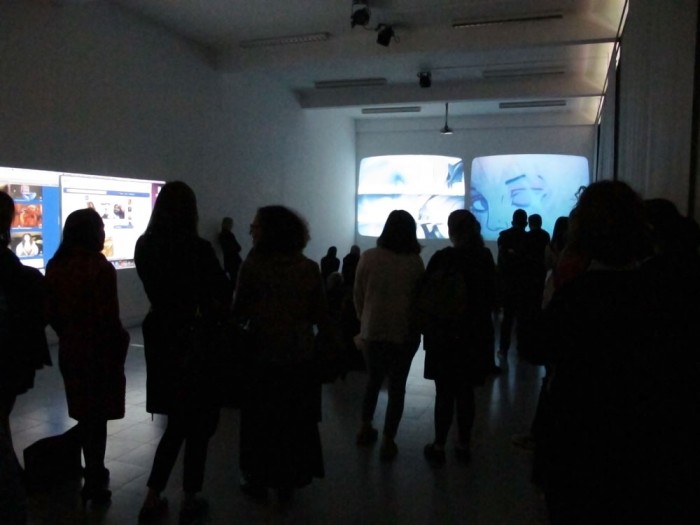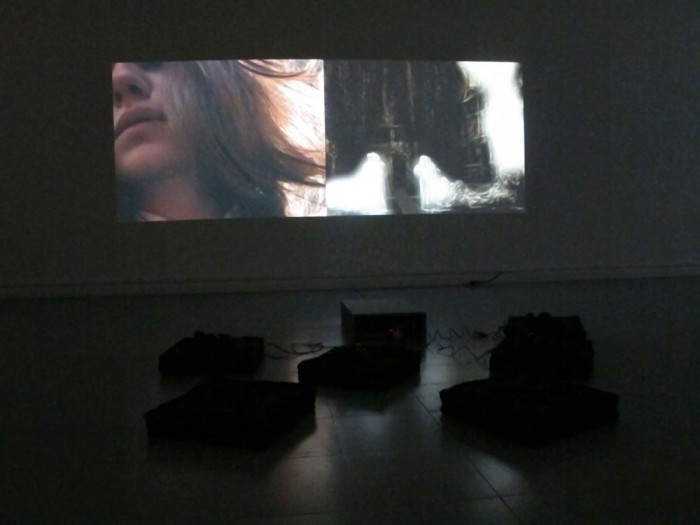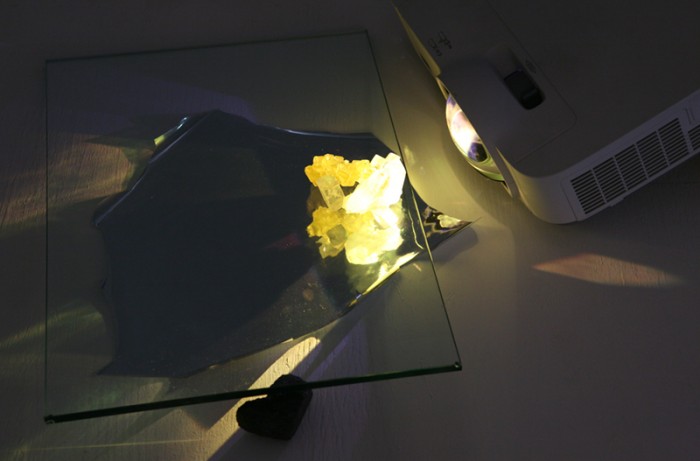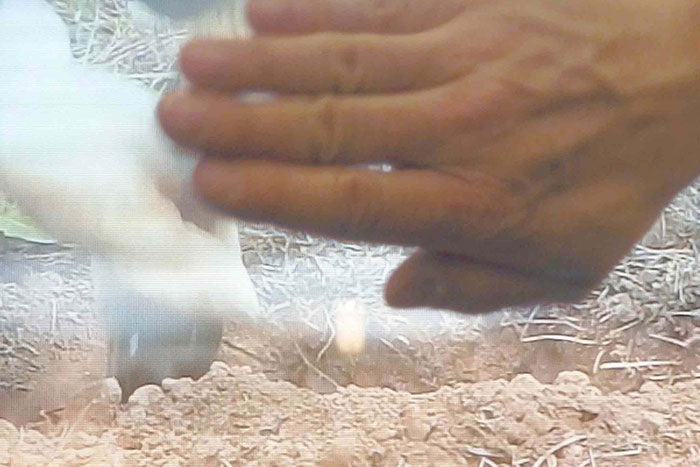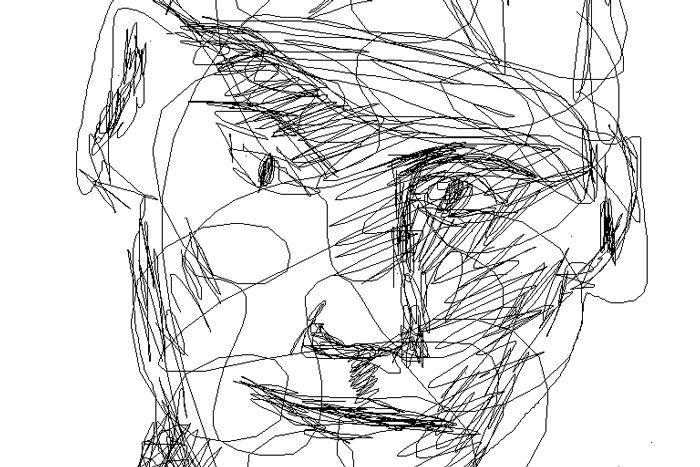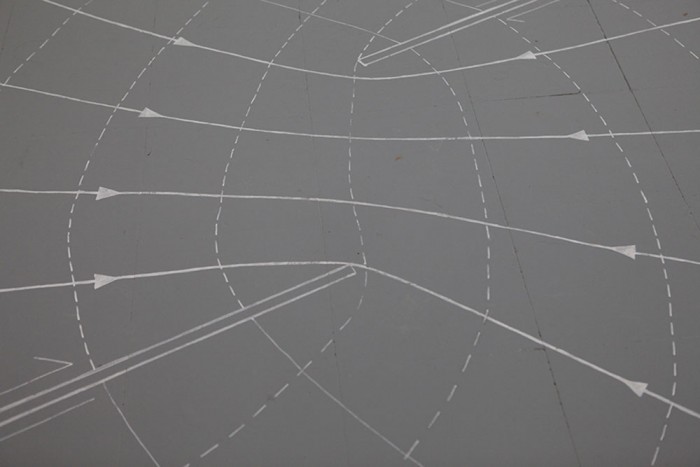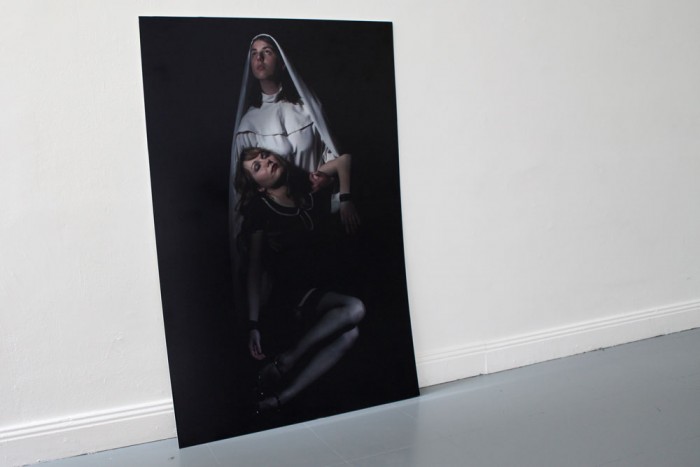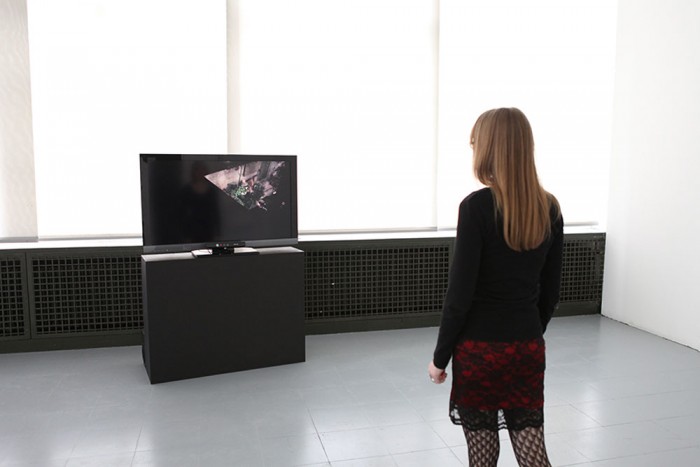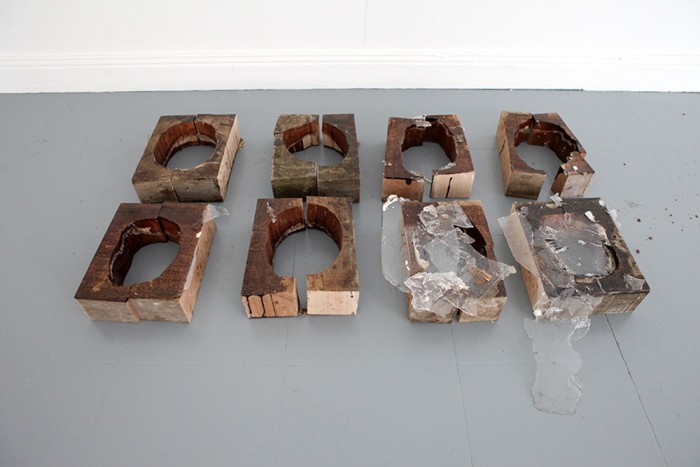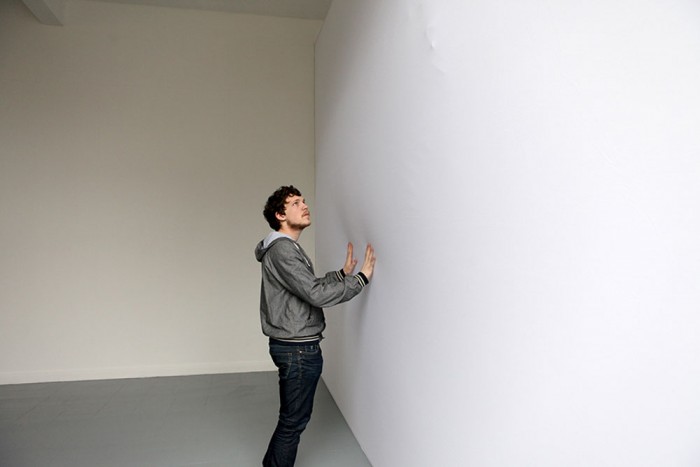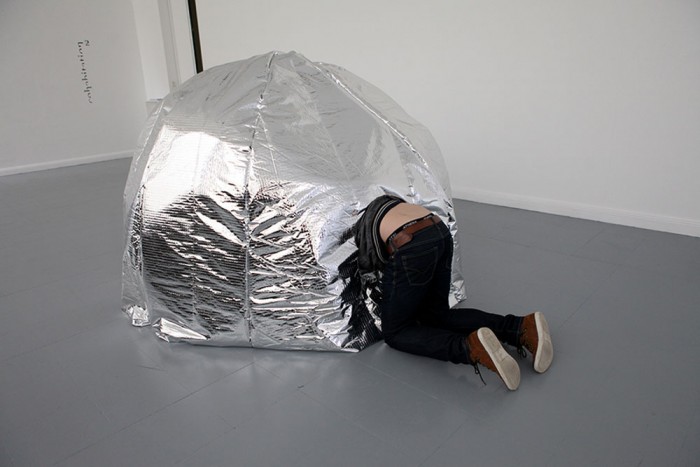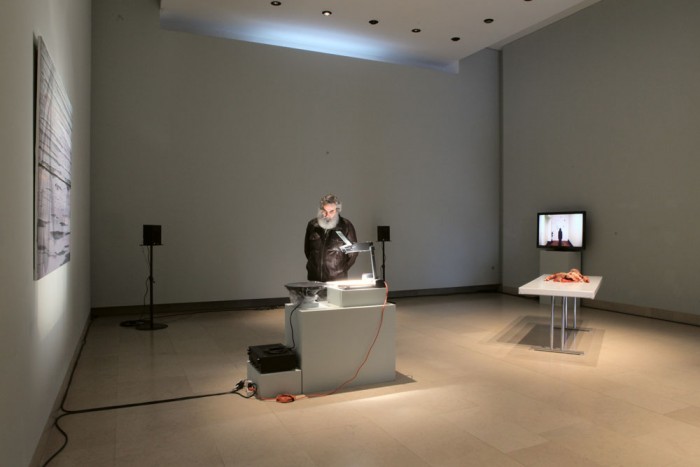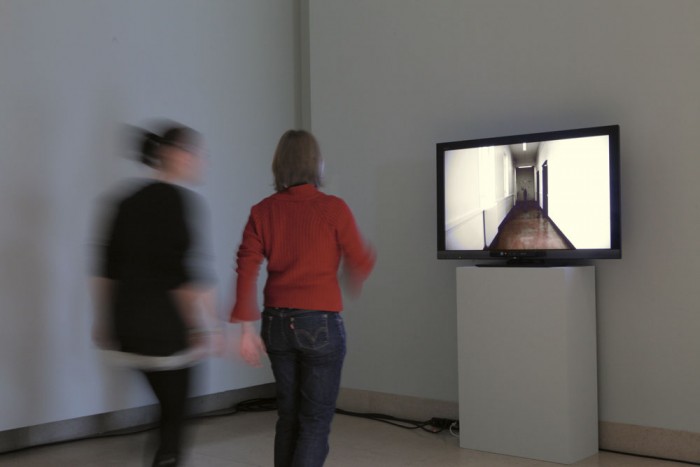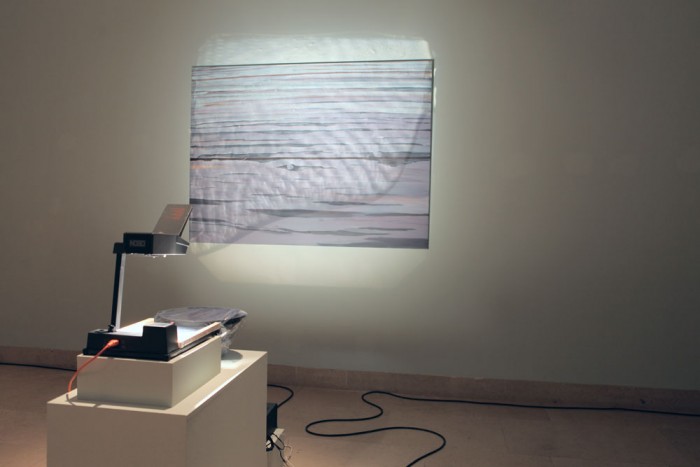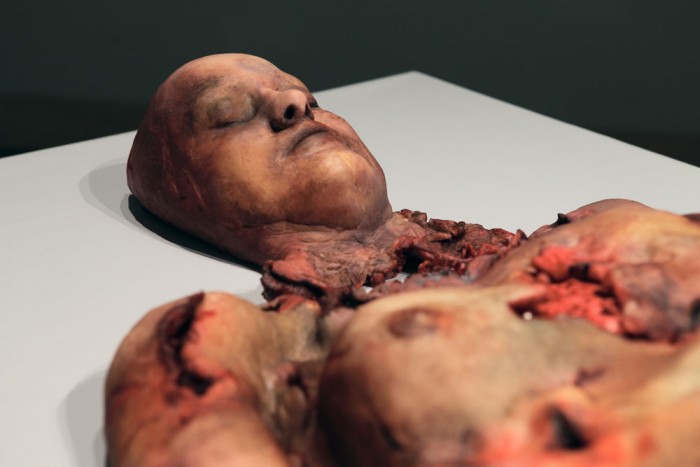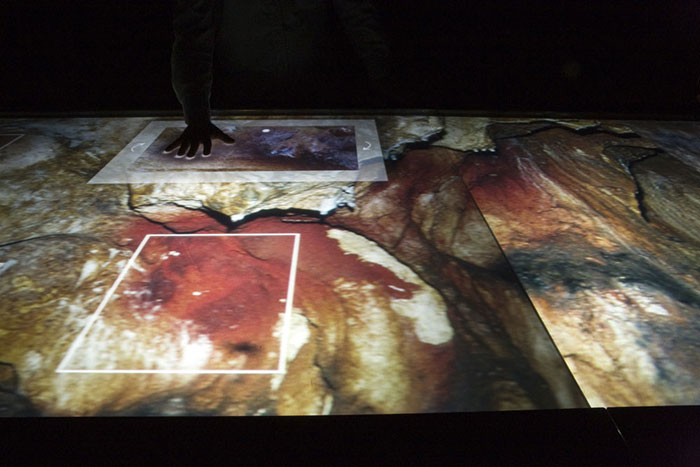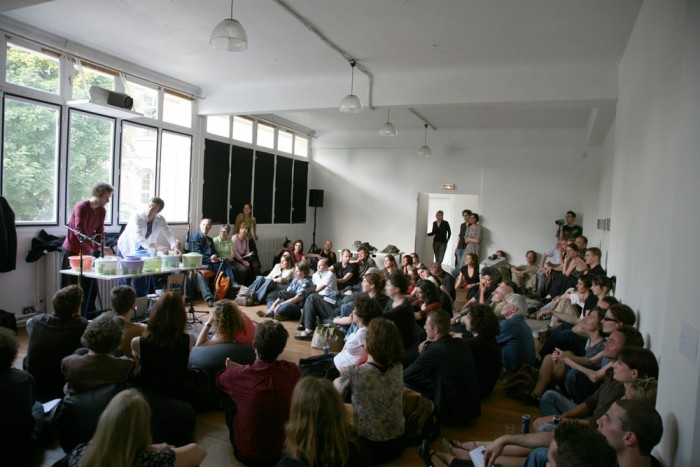Research and creation workshop
Nancy College of Art / Artem, 2004-2016
Led by Thierry Fournier and Jean-François Robardet
Translation in progress
Cet atelier de recherche et création a été initié par Samuel Bianchini en 2000, rejoint par Thierry Fournier en 2004 qui en a repris la coordination en 2007 avant d’être rejoint à son tour par Jean-François Robardet en 2008. L’atelier fait partie du dispositif ARTEM, spécifique à Nancy : une association entre l’École nationale supérieure d’Art, l’Ecole des Mines de Nancy et ICN Business School, dont le campus commun ouvrira en 2017. Comme les autres “Arcs” Artem, l’atelier accueille donc des étudiant-e-s des trois écoles, au niveau master.
Axes de recherche
Electroshop traite des pratiques numériques en art, en proposant au fil du temps des terrains d’expérimentation différents. Il explore notamment la question des dispositifs interactifs, dans le contexte d’installations, de créations scéniques ou performatives. Cette recherche se caractérise par trois directions principales : la notion de geste, la relation entre spectateurs et interprètes, et les mutations de la notion d’écriture. La question de l’interactivité dans un contexte scénique (théâtre, danse, performance) est nécessairement liée à la relation entre le corps et le geste de l’interprète ou du spectateur, et leur environnement. Le terme de geste est alors à comprendre dans son sens le plus large, de l’action corporelle à l’acte de langage : tout mouvement humain qui peut être « capté » par un dispositif réagissant en temps réel à ses variations. Les objets de la recherche portent donc sur l’invention de ces dispositifs, la conception du geste dans ces conditions, et la production de représentations multimédias à partir de la relation entre geste et dispositif en temps réel.
Les dispositifs interactifs peuvent donc concerner tout aussi bien les spectateurs que les interprètes, qui peuvent non seulement partager le même espace, mais aussi entrer en interaction avec les mêmes dispositifs. Les questions ouvertes par cette direction sont nombreuses : enjeux d’une mise en scène ou mise en jeu du spectateur, relations entre installation et performance, exploration des différences de pratique des dispositifs par les spectateurs et par les interprètes.
Enfin, l’invention de formes interactives renouvelle profondément la notion d’écriture (texte, chorégraphie, partition musicale) dans la mesure où celle-ci n’est pas fixée linéairement en amont, mais résulte d’une relation réciproque entre protagonistes (public et/ou interprètes) et dispositifs. Se posent alors des questions liées aux enjeux d’une écriture scénique, de l’élaboration d’une temporalité spécifique, et de l’invention de protocoles de production textuels, gestuels, spatiaux, sonores et musicaux.
Méthodologie
Ces projets sont soit des œuvres des artistes coordinateurs auxquels les étudiants sont invités à participer, soit des projets individuels ou collectifs d’étudiants. Dans les deux cas, on déploie une recherche-création par projet qui implique les étudiants sur l’ensemble de la conception et de la réalisation d’une œuvre, sous l’autorité de l’artiste coordinateur. Un tel principe permet d’installer une dynamique d’excellence par l’articulation de la recherche et de la pédagogie, la première faisant levier pour la seconde. Des créateurs professionnels, avec des étudiants, initient, conçoivent, expérimentent, réalisent, dirigent et rendent public un projet artistique. Impliqués sur toutes les phases et registres de la création, les étudiants font l’expérience complète d’un projet d’envergure, pluridisciplinaire, collectif et techniquement prospectif. Tous les étudiants sont invités à participer à la totalité du processus de recherche et création, quelle que soit leur filière d’origine, sans spécialisation de leur intervention.
Diffusion et valorisation
Chaque création donne toujours lieu à une diffusion publique. La finalisation, l’exposition et la diffusion dans un contexte professionnel des œuvres développées dans le cadre de l’Arc inscrit ainsi l’ensemble du processus de travail dans une logique de valorisation et de diffusion de la recherche :
– par une diffusion des créations de l’Arc auprès de contextes professionnels et de publics élargis, faisant connaître les travaux de recherche auprès d’une large audience. Depuis 2004, dix œuvres et expositions ont été réalisées dans le cadre de l’Arc Electroshop. L’ENSAN intervient pour tous ces projets comme coproducteur principal, en partenariat avec plusieurs institutions publiques et privées.
– par des actions régulières de publication sur différents supports. L’ENSAN intervient pour toutes ces publications comme coproducteur et/ou coéditeur (Les Éditions du Parc).
Historique des créations et diffusions
– En 2000-2001, création de l’exposition Hôtel des Beaux-Arts, Hôtel des Beaux-Arts, Nancy.
– En 2002-2003, création de l’exposition Promotion Artem au Centre commercial Cora Houdemont.
– En 2004-2005, première version de la création interactive pour danseur et spectateurs Réanimation, performance interactive pour danseurs et spectateurs de Samuel Bianchini, Thierry Fournier et Nathalie Simon. Diffusion publique le 5 juillet 2005 au Ballet de Lorraine. Partenariats : Centre chorégraphique national Ballet de Lorraine, SFR-Cegetel.
– En 2005-2006, création de l’installation 30×30 – Poursuite de Samuel Bianchini, en dialogue avec la proposition chorégraphique 30×30 de Paul-André Fortier. Présentation publique à Nancy, place de la Gare et tour Thiers le 6 mai 2006. Partenariat : Centre chorégraphique national – Ballet de Lorraine. 30×30 – Poursuite a également été exposée à la Ménagerie de Verre (Paris) dans le cadre du festival « Les Inaccoutumés » à l’invitation de Philippe Quesne. Partenariats : Vivarium Studio, Ménagerie de Verre, CiTu.
– En 2006-2007, création de l’installation Feedbackroom de Thierry Fournier, successivement exposée à l’ENSAN en juin 2007 puis dans le cadre de l’expo-labo OUTLAB organisée par le CiTu à la Bellevilloise (Paris) en novembre 2007. Partenariats : SFR-Cegetel, CiTu, CIDMA, La Bellevilloise, Pandore Production.
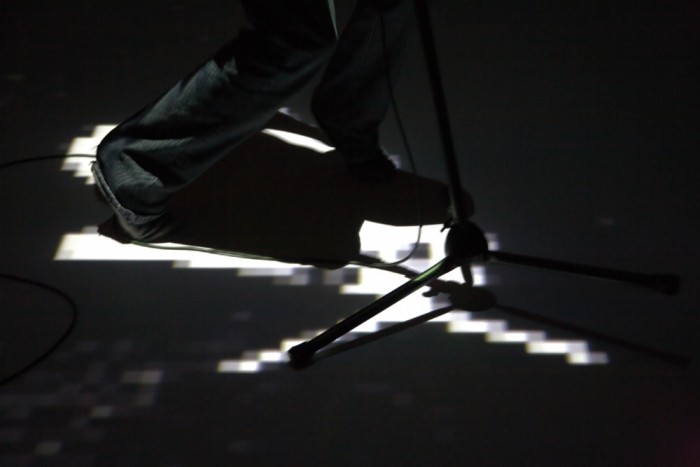
– En 2007-2008, création de la version finale de la création interactive pour danseur et spectateurs Réanimation avec le danseur et chorégraphe Sylvain Prunenec, créée dans le cadre du festival Next à l’Espace Pasolini (Valenciennes). Partenariats : Espace Pasolini – Jeune Théâtre International, avec le soutien du Groupe ICN et du Groupe SFR-Cegetel. En mai 2009, Réanimation est donnée au festival international Rencontres chorégraphiques de Carthage (Tunisie), organisées par Syhem Belkodja et Philippe Baudelot.

– En 2008-2009, création scénique Seul Richard conçue et dirigée par Thierry Fournier, avec l’ensemble des étudiants de l’Arc. Seul Richard est finalisé ensuite en résidence de création au Théâtre de la Mauvaise Tête (Marvejols, Lozère) puis à la Chartreuse de Villeneuve les Avignon – Centre national des Écritures du Spectacle, ou sa création a lieu en octobre 2010. Avec Emmanuelle Lafon (actrice), Jean-François Robardet et Juliette Fontaine (co-auteurs scénographie et musique).

– En 2009-2010, projet Cohabitation I, création d’œuvres par les étudiants et projet curatorial. Expositions en juin 2010 à l’École nationale supérieure d’art de Nancy puis en février 2011 au Musée des Beaux-Arts de Nancy.

– en 2010-2011, création de l’installation Hotspot de Thierry Fournier à Contexts, Paris, en collaboration et co-coordination avec Jean-François Robardet.
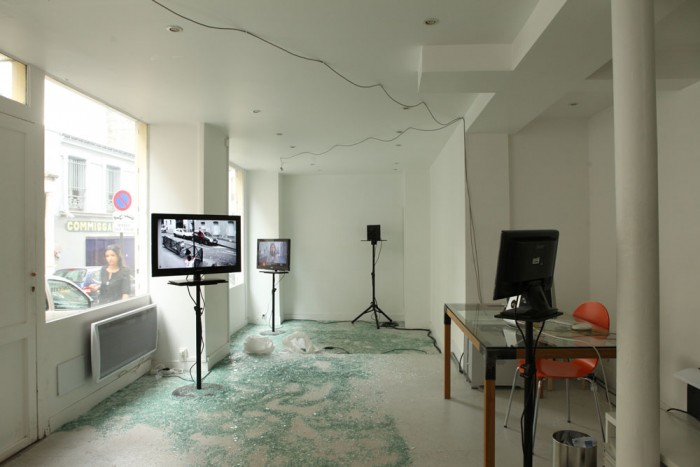
– en 2011-2012, Cohabitation II, création d’œuvres par les étudiants et projet curatorial, exposition en avril 2012 à la Galerie NaMiMa, Ensa Nancy.

– en 2012-2013 Coédition I, création collective d’une édition numérique sur iPad relatant les processus de recherche des 3 ateliers de Andrea Keen / Etienne Pressager / Lauren-Marie Joubert (Marcher), Justin Morin (Do it yourself) et Julien Prévieux (Art de la conjecture).
– en 2013-2014 Coédition II, création du catalogue sur iPad ALUM consacré à 40 artistes diplômés de l’Ensa Nancy (Marion Auburtin, Jean Bedez, Thomas Bellot, Etienne Boulanger, Thomas Braichet, Morgane Britscher, Emilie Brout & Maxime Marion, Dominique Cunin, Cristina Escobar, Elise Franck, Caroline Froissart, Virginie Fuhrmann, Jochen Gerner, Jérémy Gobé, Marco Godinho, Sébastien Gouju, Harold Guérin, Sylvie Guillaume, Paul Heintz, Simon Hitziger, Victor Hussenot, Marie Husson, Guillaume Janot, Marie Jouglet, Yonsoo Kang, Geoffrey Kayser, Benjamin Laurent Aman, Sophie Lécuyer, Heewon Lee, Aurélia Lucchesi, Mayumi Okura, Cécile Paris, Dominique Petitgand, Emmanuelle Potier, Rares Victor, Jean-François Robardet, Vivien Roussel, Aïda Salahovic, Emilie Salquèbre, Atsuki Takamoto, Sarah Vaxelaire).
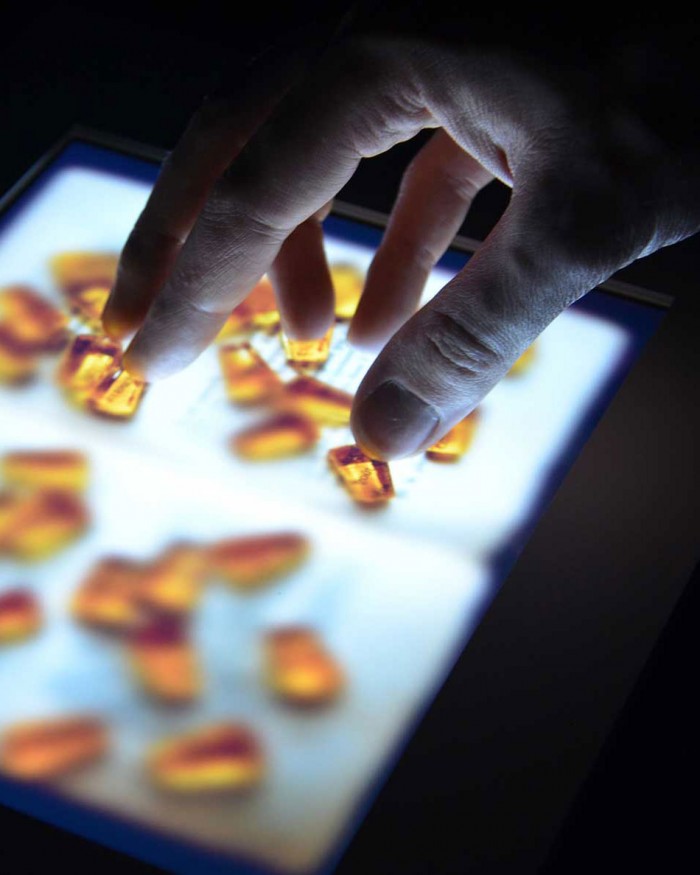
– en 2014-2015 création de The Self and the world, long-métrage collectif composé de 15 courts créés par les étudiants de l’Arc. Première projection publique à l’IECA Nancy le 5 mai 2015.
Publications
– Publication Hôtel des Beaux-Arts, Édition ENSA Nancy 2001.
– Publication Promotion Artem / École nationale supérieure d’art de Nancy, projets des Ateliers de recherche et création Artem, Édition ENSA Nancy 2003, avec le soutien de la Communauté urbaine du Grand Nancy et du Ministère de la Culture et de la Communication
– DVD Poursuite de Poursuite coédité en 2008, dans la collection Import, par Les presses du réel / MFC – Michèle Didier, co-édité par l’ENSAN / Les Éditions du Parc
– DVD Feedbackroom édité en 2009 aux Éditions du Point d’Exclamation, co-édité par l’ENSAN / Les Éditions du Parc.
– Publication R & C – Recherche et création, présentant un ensemble de projets de recherche en art, dont les axes de recherche de l’ENSAN. Ouvrage dirigé par Samuel Bianchini, co-édité par les Éditions Burozoïque et l’ENSAN / Les Éditions du Parc, paru en version e-book chez Art Book Magazine en mars 2012.
– Publication du catalogue sur iPad ALUM co-direction éditoriale par Thierry Fournier et Jean-François Robardet, coédition Art Book Magazine / Pandore / Ensa Nancy, 2014.
